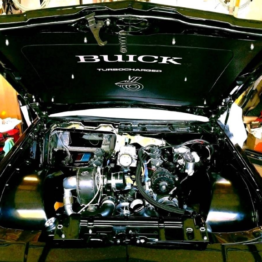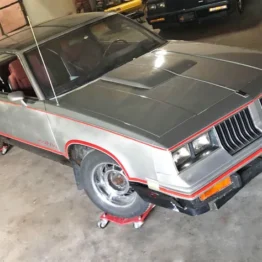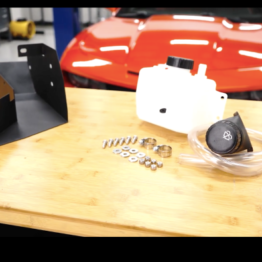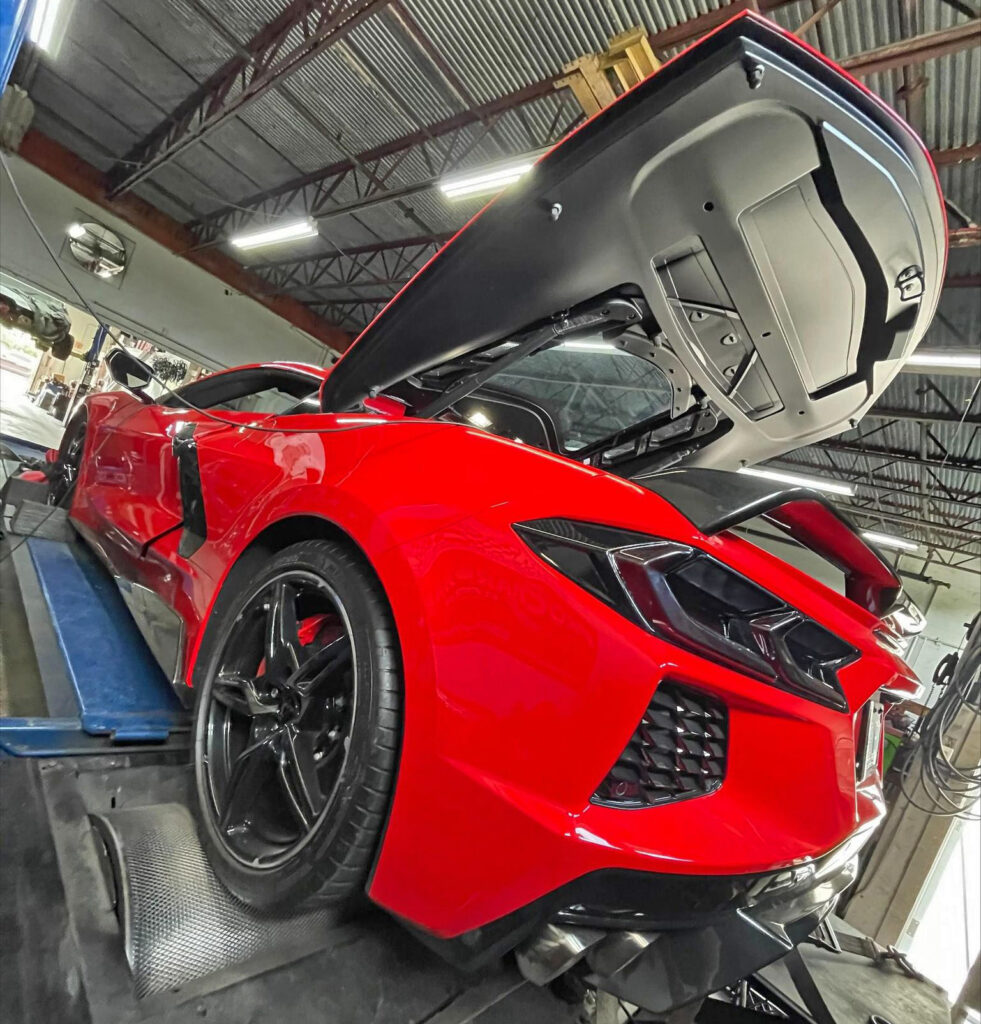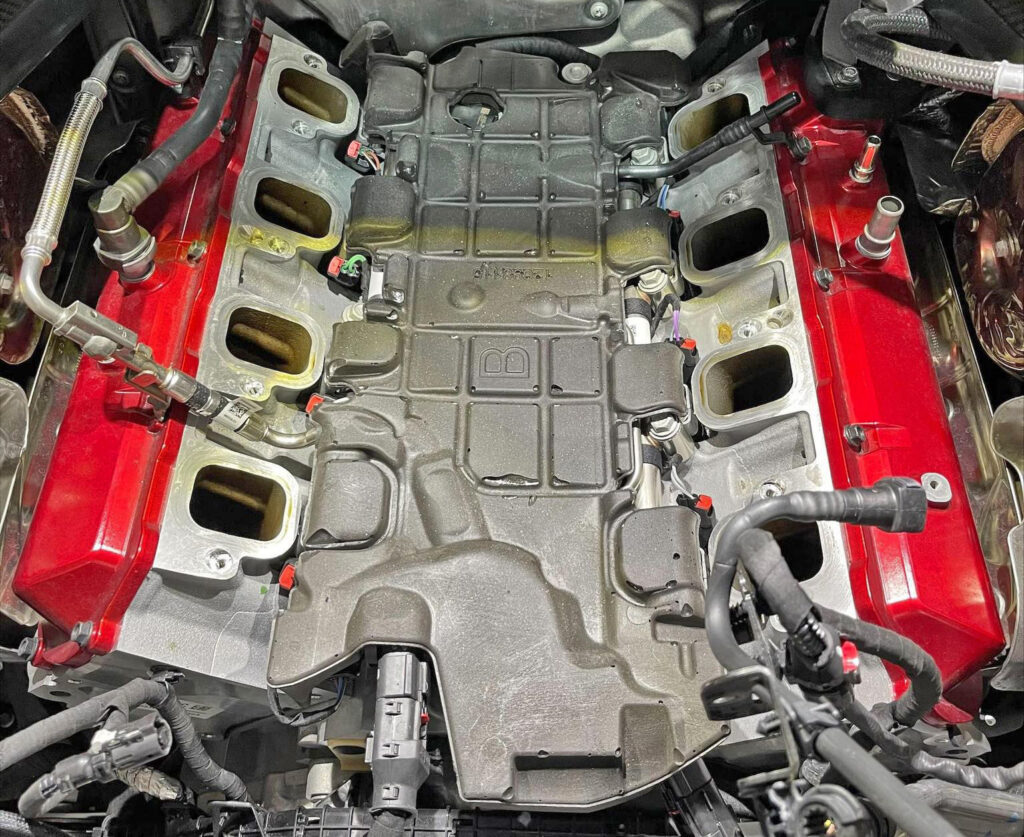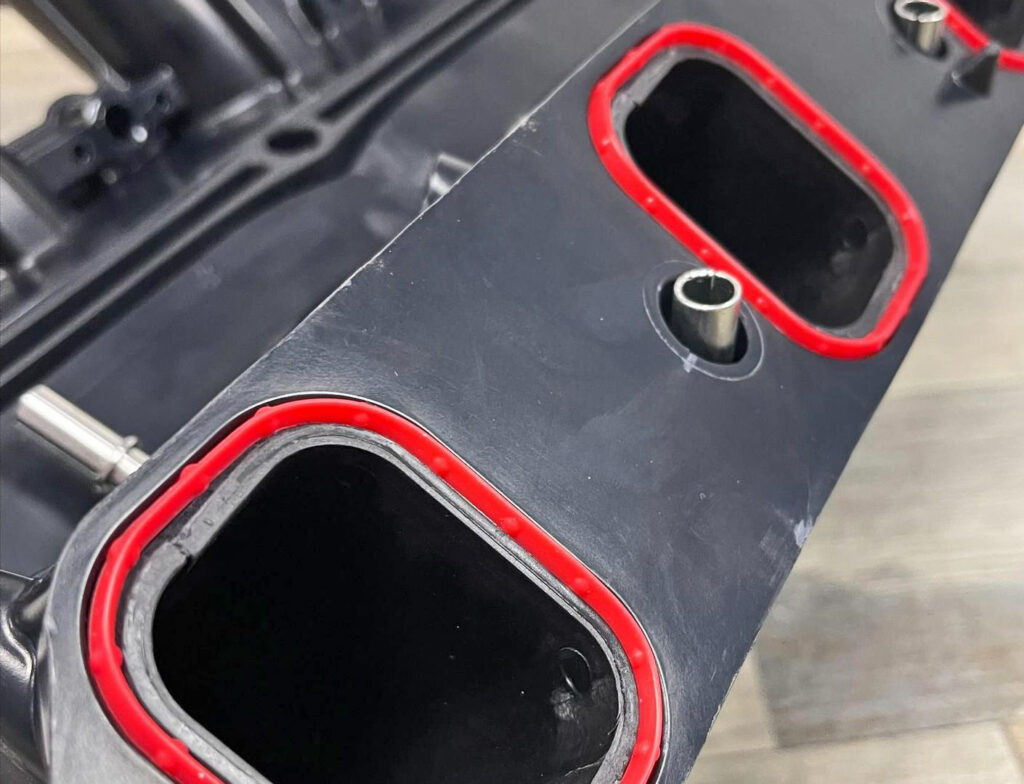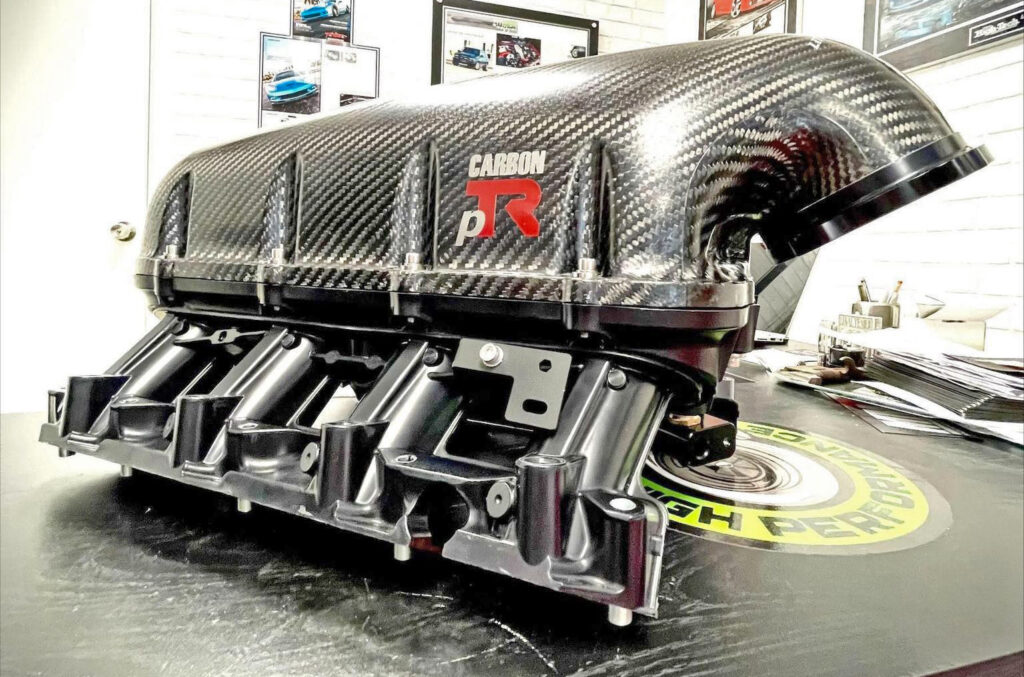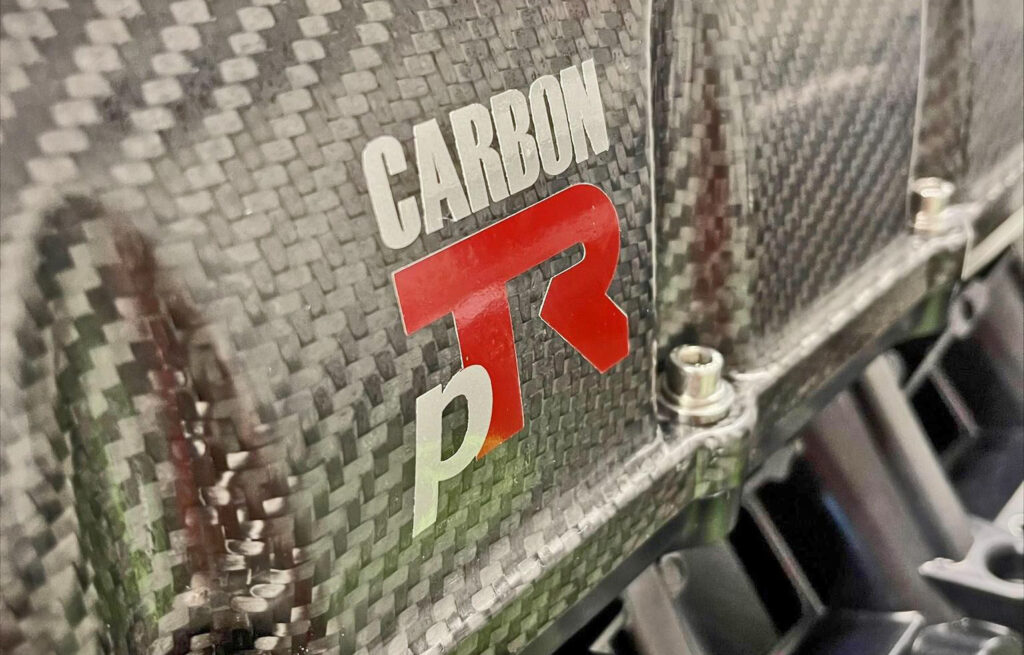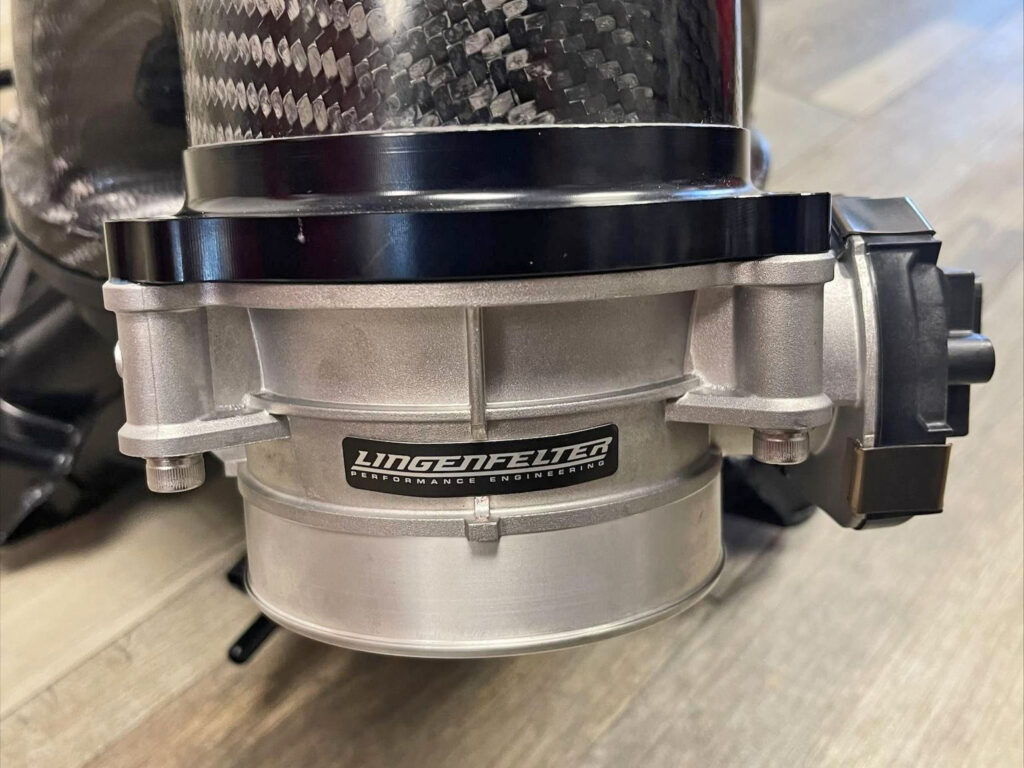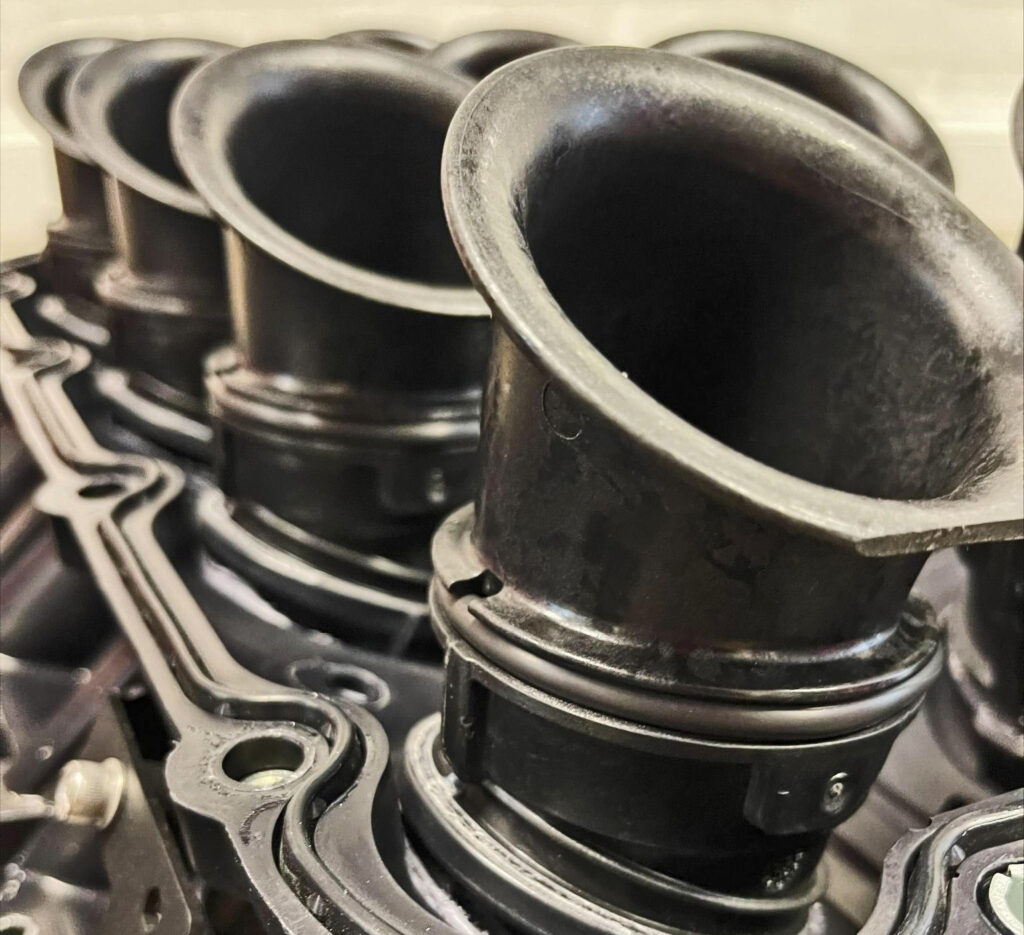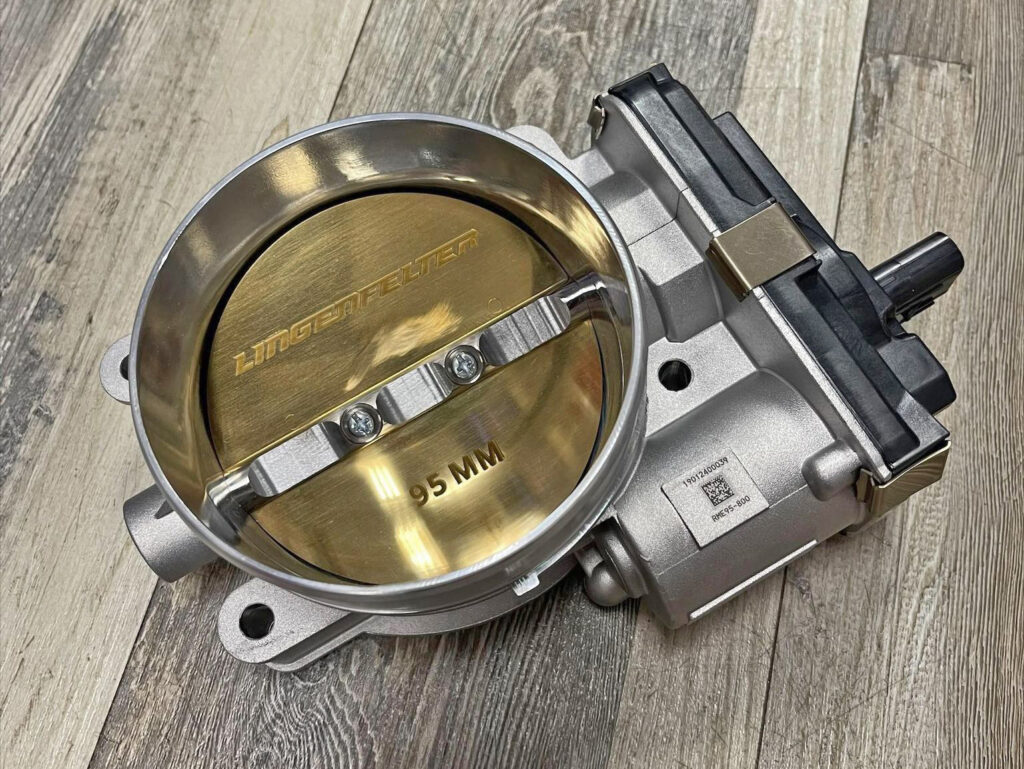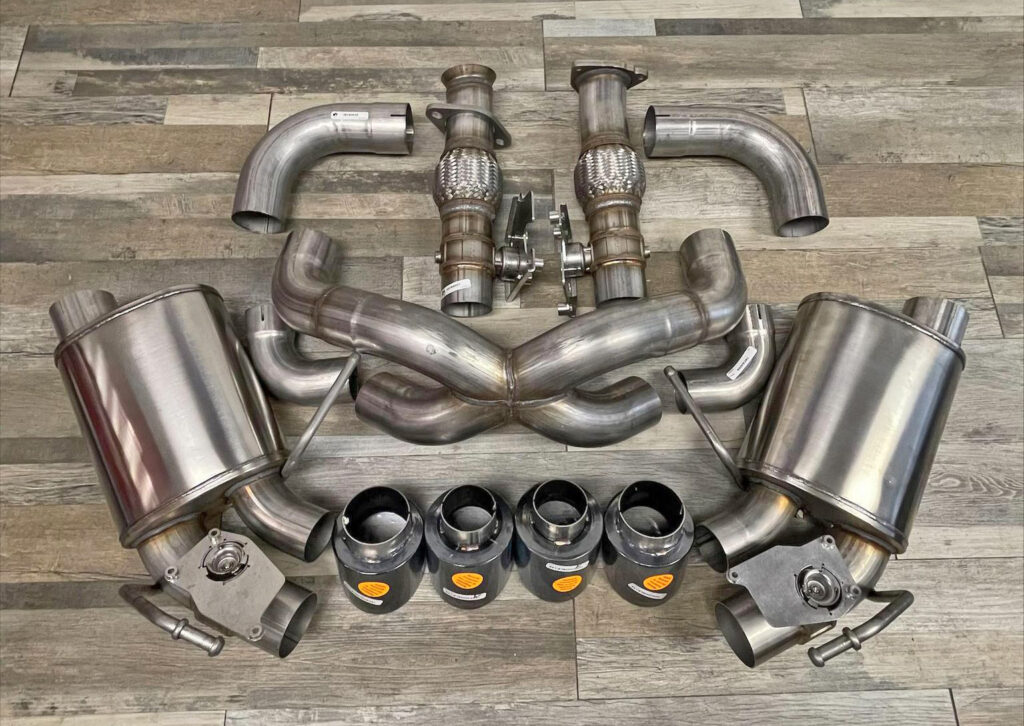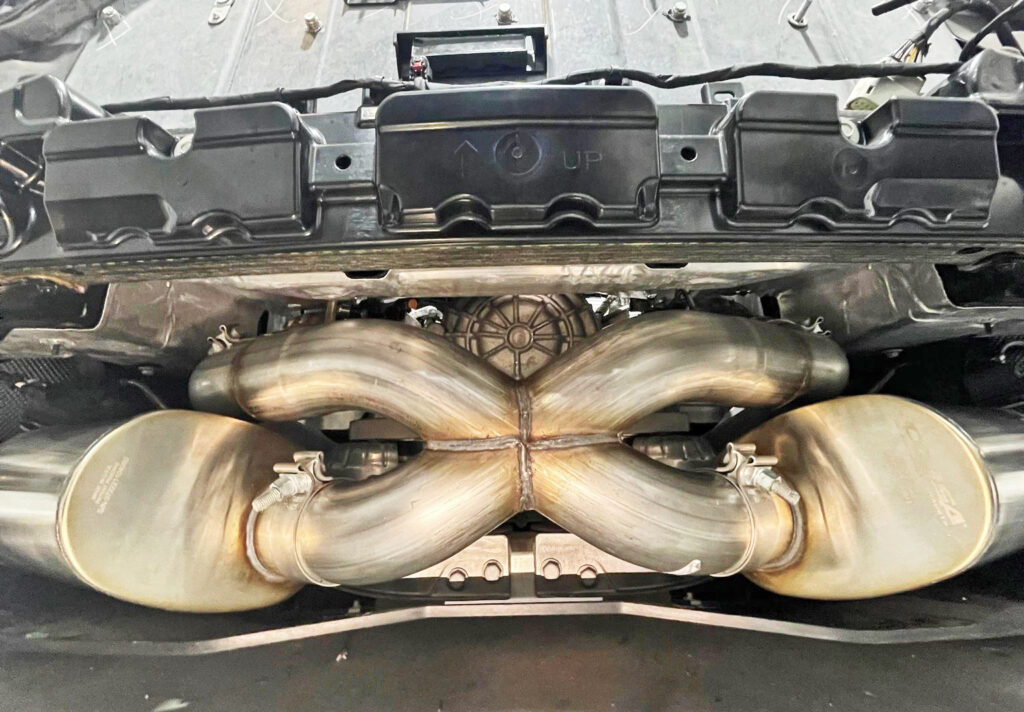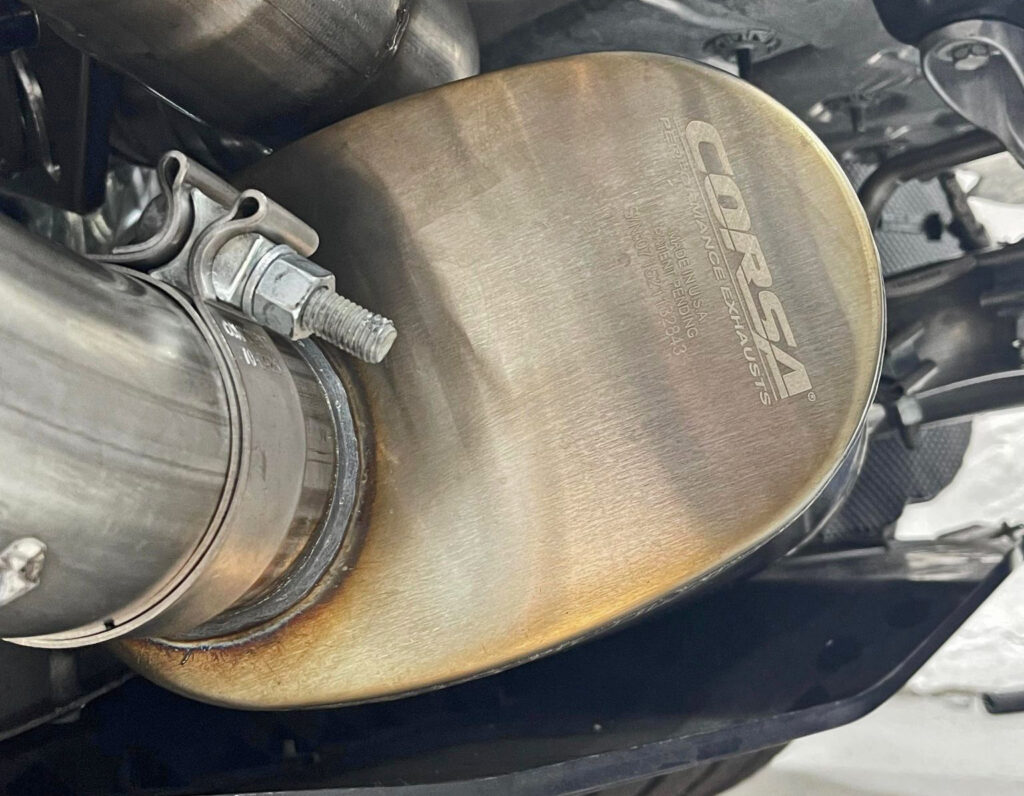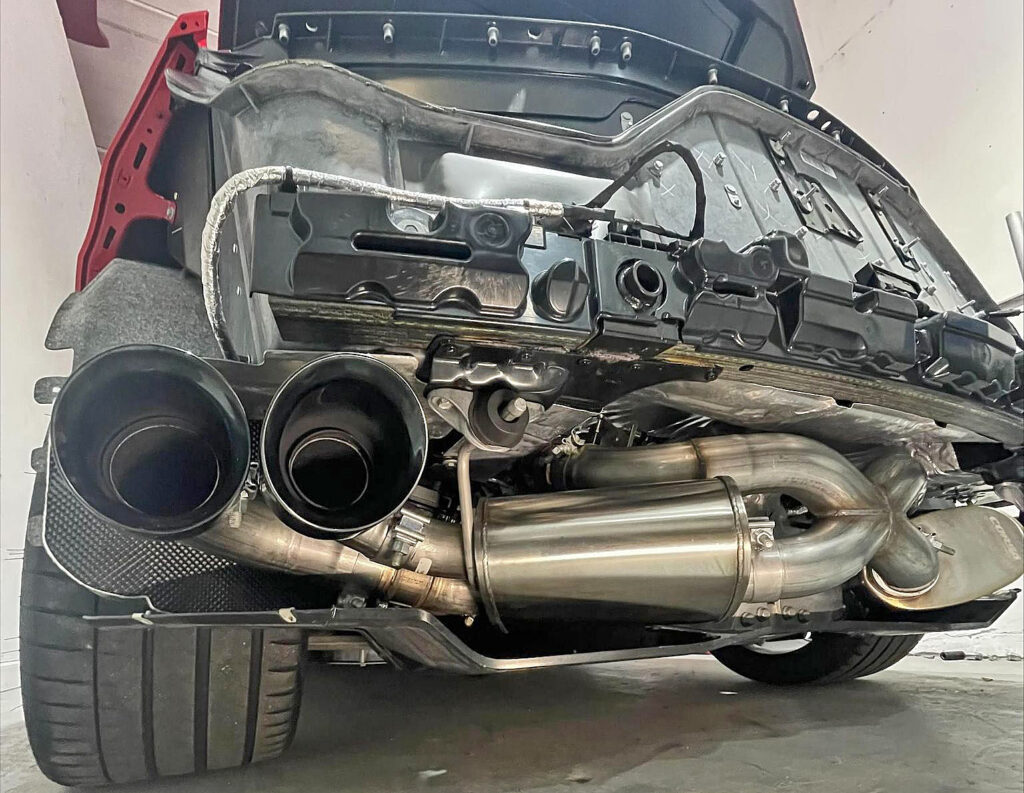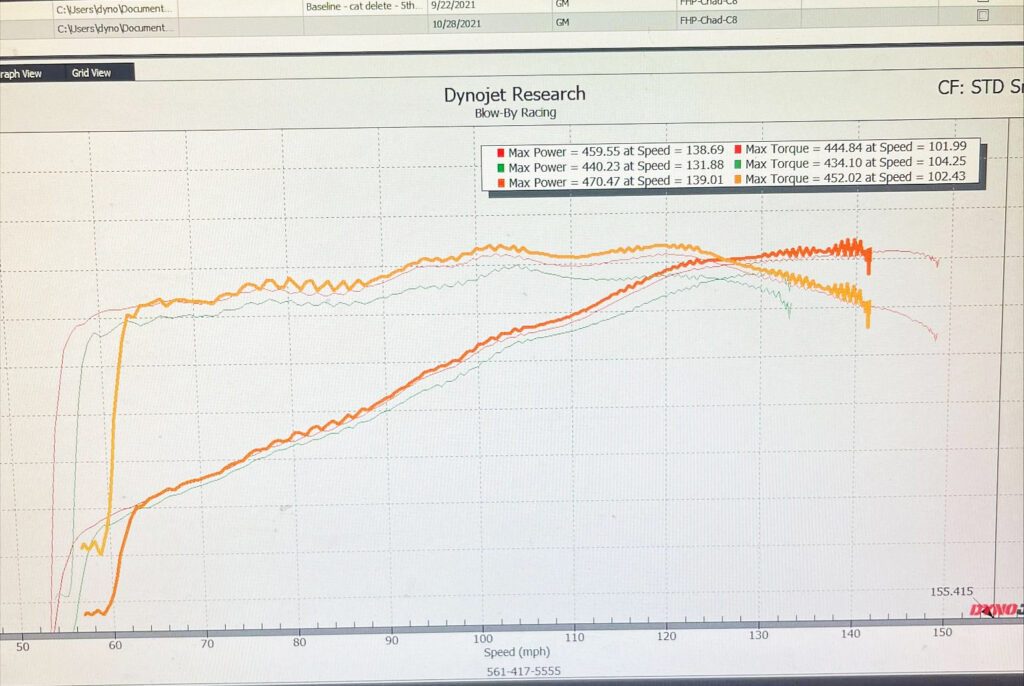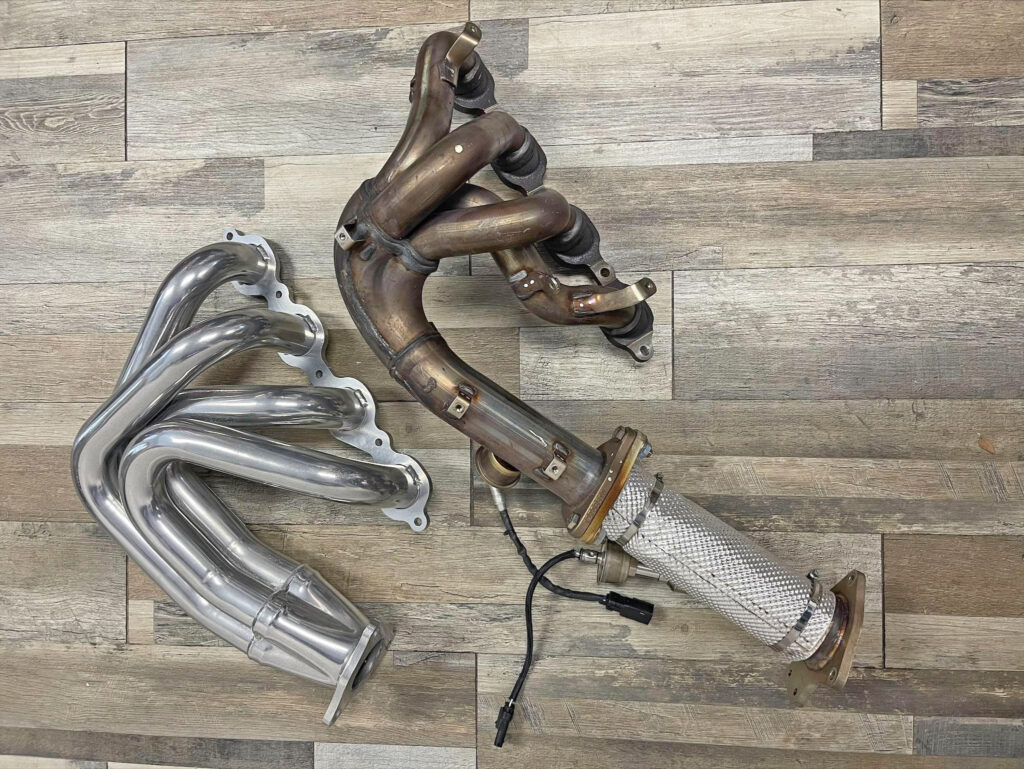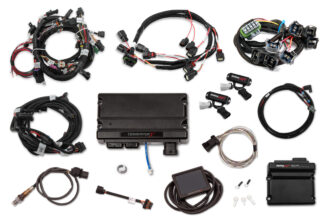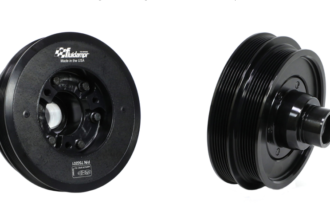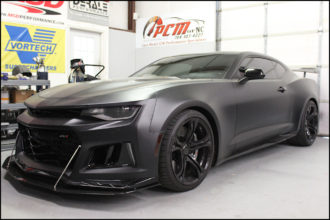Florida High Performance Turns Up the Wick on a C8 Corvette
The C8 Corvette has been one of the hottest cars in the industry, and on the streets of Anytown, USA. While the aftermarket has been working hard to develop speed parts, suspension parts, and yes, tuning software for the cars, the speed shops and car builders have been putting in the overtime to got those entry-level horsepower numbers up.
One of those shops, include South Florida’s own, Florida High Performance (FHP), manned by Erik Bentley. We’ve been working with Erik for years, and with this recent opportunity to cover some C8 content became available, we jumped on it.
The idea behind this build is pretty simple; crank up the power with what’s currently available, increased overall performance, as well as maintain reliability and streetability. Seems cut and dry, but with as new as these cars are, there’s little documented information out there to see what kinds of gains could be had. Let’s change that.
BASELINE TESTING:
Florida High Performance strapped the C8 down to their in-house Dynojet dynamiter to get a solid baseline number. This is the rule of them before the first wrench is turned, just to see where your starting point is. It’s common knowledge for those who own a shop, but more often than not, it’s completely glossed over by those shade-tree mechanics who just throwing hardware at their vehicles. In this case, the C8 had a couple of small bolt-ons already. It arrived to the party with an Attack Blue dry drop-in air filter from Paragon Performance, factory intake manifold, throttle body, exhaust manifolds, Fabspeed cat delete pipes, and factory exhaust. The result was 440hp/434tq to the rear tires.
It should be noted that all pulls were performed in 5th-gear with 80% humidity, and 90* air temps with the NPP OPEN.
MODS, ROUND 1:
Going into the recipe first, FHP installed the coveted Lingenfelter/Performance Design carbon intake manifold and throttle body, and went back onto the dyno. With this simple induction upgrade, the results generated 459hp/444tq — a positive gain of 19 rwhp, 10 rwtq over baseline run.
MODS, ROUND 2:
Building upon the foundation that was already there, FHP then applied a set of Kooks long-tube headers and LPE/Corsa Performance exhaust with NPP OPEN, results were 470 rwhp/452 rwtq , a positive gain of 11 rwhp, 8 rwtq.
“All of these runs were done with NO tuning whatsoever — bolt-on, and go. There’s a lot of misinformation online (surprise, surprise) about headers actually hurting performance on the C8. This is simply not true, at least in our case. Performance gains are nowhere near what [some manufacturers] claim, but that’s typical of any performance modification, in my experience. There are so many variables that go into product testing that it is impossible to rely solely on the claims of any one manufacturer.” — Erik Bentley, Florida High Performance
THE INEVITABLE CHECK ENGINE LIGHT:
Florida High Performance was able to avoid any Check Engine Light (CEL) by utilizing Fabspeed cat simulators that they sell in addition to the delete pipes. They are like mini cats that install between the cat delete and factory 02 sensor. Initially, they did have a CEL for the cat deletes with this set up, so then they added some additional 02 sensor spacers FHP purchased from Big Daddy’s Garage. According to FHP, this completely solved the issue of a CEL for cat delete.
FHP experienced a CEL after installing the Corsa catback, despite the relearn sequence being done. We had to take the vehicle to the local dealership and have the exhaust valve modules “relearned” and that took care of that issue — no CEL since, for anything. The relearning process took 10 minutes at the dealer and they didn’t charge us, but we can’t say that your local dealer won’t.
INSTALL NOTES:
Every single component installed during this test is completely do-it-yourself. Anyone with a solid handle on mechanics and a complete set of tools can do this at home. Rear bumper is removed, as well as other panels within the trunk, and the rest is pretty straight forward. The intake manifold installation is a little tedious mainly because of its location within the engine bay. Take your time and follow the guide which comes with the part.
HEADER COATING AND ENGINE BAY HEAT:
FHP requires that all C8 headers get ceramic coated prior to install. They do that for two reasons: one, is to keep them looking shiny even after several heat cycles. The engine is the star of the show back there in the engine bay. We want our customers vehicles to look as good as they perform.
Second, is heat. The ceramic coating helps to keep heat inside of the header instead of it radiating out. Even after several dyno runs, ambient engine bay temps were no more than stock. Nothing melts, nothing is damaged, and there isn’t a need to add additional heat protection to surrounding parts as a result of the coating. This includes the spark plug wires. Nothing was affected by the install of the headers, or VAT delete pipes as a result of excessive heat.
EXHAUST SOUND:
This configuration (headers, cat delete, Corsa) is very loud on cold starts, especially with open exhaust valves. As the engine warms up, the exhaust note becomes more tame and very nice. I am a huge fan of the exhaust note cruising around town, and at wide open throttle. There is absolutely NO drone at any time, and with exhaust valves closed, you would have no idea the car is modified. It is almost like stock until you get on the throttle. You can see more live video of this in our youtube video of the C8 where we go into detail about the parts we installed, the gains we achieved, and the exhaust sounds with in car and fly-bys.
CONCLUSION:
“Overall we are very pleased with the performance gains. Had we been able to tune the vehicle, we could have probably doubled the gains. Adjusting fueling and ignition timing are critical when tuning any vehicle. Relying on the factory calibration and sensors to make the adjustments just isn’t optimal, but it is all we have at the moment unless you want to go with a “piggy back” style ECU or stand alone, which most C8 owners don’t want to do.
We have partnered with Peitz Performance of Texas and will be installing their twin turbo system on this vehicle sometime early 2022. We will document the entire build process on our youtube channel…we are really looking forward to that.” — Erik Bentley, Florida High Performance

Rick Seitz is the owner and founder of AutoCentric Media, and has a true love and passion for all vehicles; GM, Ford, Dodge, imports, trucks — you name it! When he isn’t clacking away on his keyboard, he’s building, tuning, driving or testing his current crop of personal projects!



